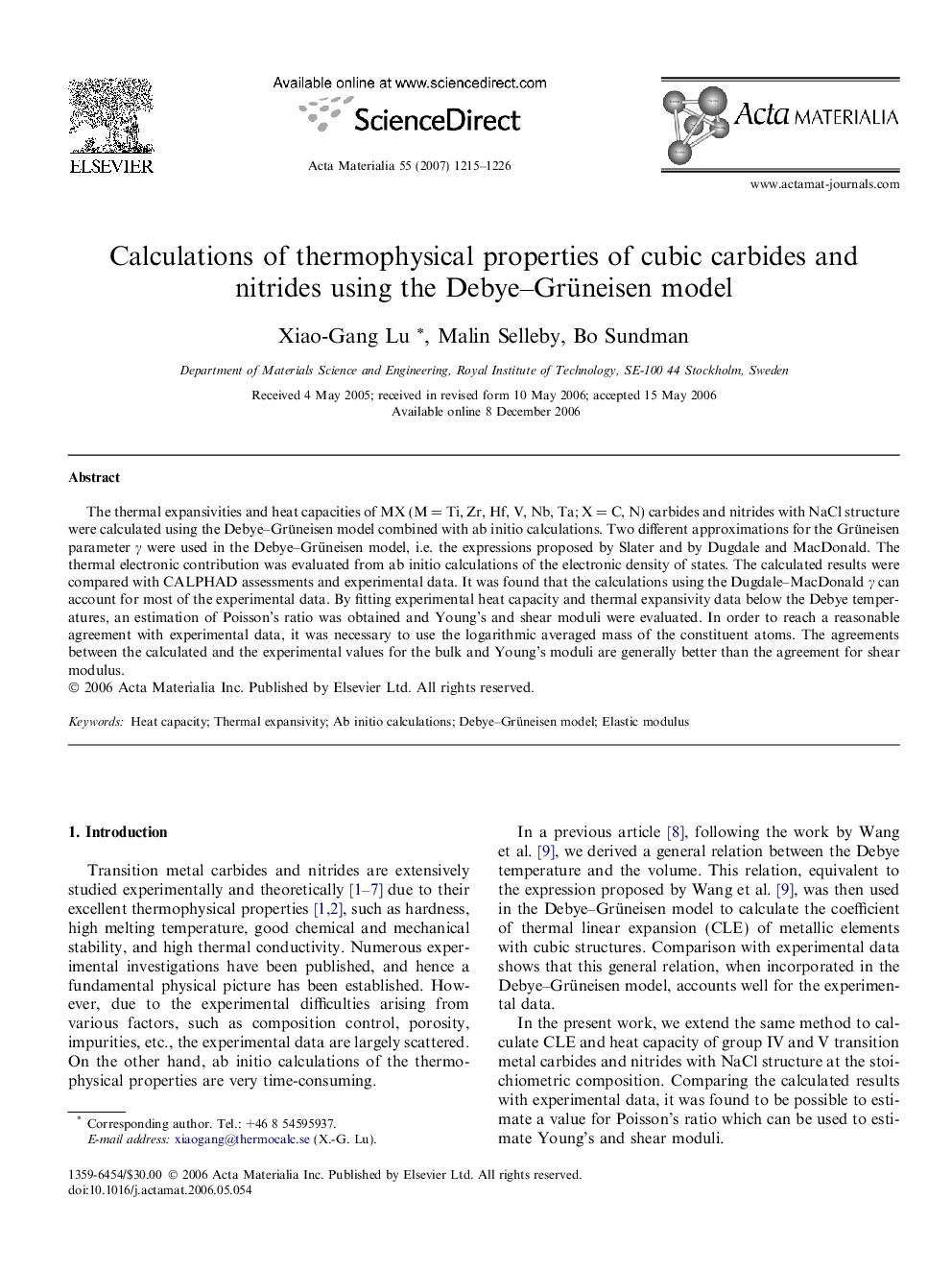| Article ID | Journal | Published Year | Pages | File Type |
|---|---|---|---|---|
| 1449856 | Acta Materialia | 2007 | 12 Pages |
The thermal expansivities and heat capacities of MX (M = Ti, Zr, Hf, V, Nb, Ta; X = C, N) carbides and nitrides with NaCl structure were calculated using the Debye–Grüneisen model combined with ab initio calculations. Two different approximations for the Grüneisen parameter γ were used in the Debye–Grüneisen model, i.e. the expressions proposed by Slater and by Dugdale and MacDonald. The thermal electronic contribution was evaluated from ab initio calculations of the electronic density of states. The calculated results were compared with CALPHAD assessments and experimental data. It was found that the calculations using the Dugdale–MacDonald γ can account for most of the experimental data. By fitting experimental heat capacity and thermal expansivity data below the Debye temperatures, an estimation of Poisson’s ratio was obtained and Young’s and shear moduli were evaluated. In order to reach a reasonable agreement with experimental data, it was necessary to use the logarithmic averaged mass of the constituent atoms. The agreements between the calculated and the experimental values for the bulk and Young’s moduli are generally better than the agreement for shear modulus.
